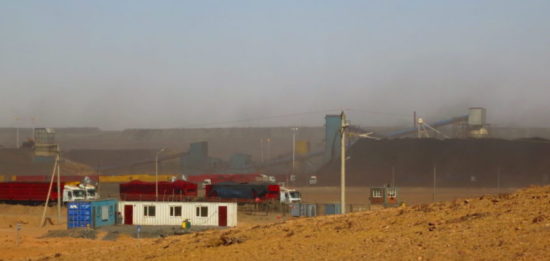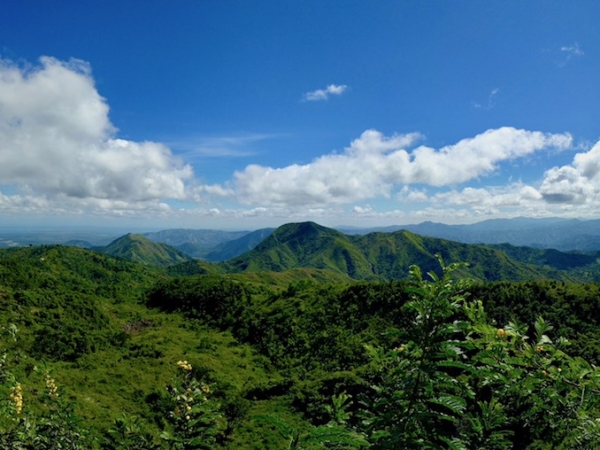Investigations into Two Mongolian Mines Reveal Weakness in PCM Compliance Practices

When nomadic camel herders in Mongolia’s South Gobi Desert filed a complaint about the impacts of two large mines on their way of life, they thought they knew what to expect from the complaint office that received their case. Known as the Project Complaint Mechanism (PCM), it accepts complaints from communities harmed by projects financed by the European Bank for Reconstruction and Development (EBRD) and investigates whether those projects have met the bank’s social and environmental standards. The herders expected a thorough investigation: one that would document the harm they had experienced and draw conclusions about compliance with international standards based on that evidence. Four years later, their experience has fallen far short of these expectations.
The Oyu Tolgoi copper and gold mine and the Energy Resources, LLC coking coal mine operate in a remote, arid part of the Gobi Desert. To access enough pasture and water, herders in that area have traditionally moved their animals across wide areas of land. The two mines have seriously disrupted those traditional movement patterns due to an expansive network of infrastructure, including roads, airports, transmission lines, quarries and a planned railroad.
The Oyu Tolgoi mine alone has displaced herders from more than 50,000 acres of pastureland and degraded additional areas.
With support from Oyu Tolgoi (OT) Watch, CEE Bankwatch, and Accountability Counsel, herders allege that cumulative impacts from this mine infrastructure — including destruction and fragmentation of pastureland, a rise in animal road deaths and other health and safety impacts from project-related dust billowing through the windy desert terrain — have hindered their ability to continue their traditional livelihoods.
Yet two Compliance Review Reports released by the PCM earlier this year entirely failed to address the serious harm reported by complainants. Herder testimonials, even those that were substantiated by an independent report commissioned jointly by the herders, Oyu Tolgoi LLC, and the local government, were left out of the reports entirely. A single example illustrates this issue well: during an August 2015 site visit, a herder tearfully told the story of her only child drowning in an unreclaimed quarry that had been used by the Energy Resources project. The quarry remains unreclaimed to this day and continues to present a risk of further accidents. Despite the tragic nature of this incident, the report fails to so much as acknowledge this testimony or mention that this type of harm is a concern to complainants.
The PCM has claimed that this and other herder testimonials were omitted due to the “inconclusiveness of personal observations, inconsistency regarding the nature or severity of impacts reported [and] uncertainty as to which impacts might be attributable to the client,” among other reasons. Regardless of these imperfections, complaint offices at peer financial institutions have handled similar evidence in a fundamentally different (and more respectful) manner. For example, in >a case about a railroad improvement project, the Asian Development Bank’s Compliance Review Panel (CRP) discussed in detail the story of two children who drowned in a pond that formed in a project-related excavation site. The CRP presented the known facts of the incident, as well as facts in dispute, and then used the example to draw relevant findings about the project’s failings. The compliance report explained that the CRP’s conclusions were based on the information and insights it received and from its own observations and assessments in the field.
Similarly, in a recent case about a road development project, the World Bank’s Inspection Panel explained in detail the information and testimonies provided by complainants during a compliance review site visit, including the story of a boy who drowned in an unreclaimed excavation pit. The compliance report discussed the panel’s impressions of how this and similar tragedies, and the company’s response to them, affected the community and contributed to feelings of resentment and distrust.
Given the “inconclusiveness,” “inconsistency,” and “uncertainty” of personal testimonials, the PCM’s compliance reports focus instead on project documents produced by the EBRD and the mining companies themselves. The reports assess whether the required social and environmental review documents were produced, without regard to whether the documents actually helped avoid or mitigate harm to local people and the environment. With this limited perspective and without mentioning herders’ evidence of harm, the reports conclude that both projects are in compliance with the Bank’s social and environmental standards – standards designed to prevent or mitigate harm to local people and environment.
The flawed approach taken to the Oyu Tolgoi and Energy Resources reports is not an isolated problem. In another recent report about a third Mongolian mine, the PCM again focused on whether the required documents were produced and assessments conducted without any in-depth assessment into whether the bank had effectively avoided or mitigated harm to local communities.
These recent compliance reviews have brought to light structural weaknesses of the PCM, which have prevented the office from consistently applying best practice for compliance reviews. A letter from civil society organizations to the EBRD President and Board of Directors describes these issues in more detail and suggests concrete changes.<
Over time, allowing such an approach to continue will undermine the utility and legitimacy of the PCM and prevent the bank from learning lessons from poorly implemented projects. Changes to the office’s procedures are needed — and quickly — to ensure that compliance reviews reliably assess the social and environmental performance of EBRD projects and that all complainants receive fair and equitable treatment of their claims.

